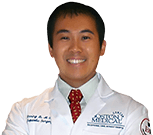FAQ Shoulder Surgery
Post-Operative Frequently Asked Questions (FAQ’s) For Shoulder Surgery
You will be wearing your sling +/- abduction pillow AT ALL TIMES except for hygiene or therapy.
You will be wearing your sling +/- abduction pillow WHILE YOU SLEEP.
Length of time you will wear your sling +/- abduction pillow depends on your surgery
- Rotator Cuff surgery ~ 4 to 6 weeks (depends on the strength of your repair)
- Labral surgery / Shoulder stabilization ~ 4 or 5 weeks depending on the size of the tear.
NO Active Motion of the Shoulder is allowed immediately post-op
Motion of Elbow / Wrist / Hand is OK and ENCOURAGED DAILY
Cryotherapy (Cold therapy) is a very important part of pain control after surgery. The cold temperature will help control swelling and reduce pain. This can be done several ways – with an ice pack or a cold therapy unit.
Cold therapy units are more effective in concentrating the cold to the surgical site via a molded wrap. Cold water is then circulated through the wrap, delivering cold to all sides of the joint. Cold therapy units come 2 ways – Cold therapy only and Cold therapy with compression:
Cryocuff ® (cold only) – cold therapy via a molded wrap
You may elect to use an ice pack or a Cryocuff ®.
** ROTATOR CUFF REPAIRS – PLEASE DO NOT TAKE ANY ANTI-INFLAMMATORIES FOR 1 MONTH ** (i.e Naprosyn / Celebrex / Ibuprufen / Aspirin)
You may remove the OP dressing to Post Op day #3
Apply Band-Aids to the wounds. Do not remove the Steri-strips. Please do not use Bacitracin or any other ointments on the incision. For larger incisions, a light gauze dressing may be used on the incision.
There may be a small amount of bleeding and/or fluid leaking at the surgical site. This is normal. The shoulder is filled with fluid during surgery, sometimes causing leakage for 24-36 hours. You may change or reinforce the bandage as needed.
Use Ice or Cryocuff as often as possible for the first 7 days, then as needed for pain relief. Do not wrap the wound too thickly or the Cryocuff cold may not penetrate as well.
There will actually be more swelling on days 1-3 than you had the day of surgery. This is normal. The swelling is decreased by using the Ice or Cryocuff.
You may shower on POD #3 using a watertight plastic bag over your shoulder. Using Glad Cling Wrap with a plastic bag on top wrapped with tape on either side of your shoulder is most recommended.
DO NOT GET THE WOUND WET, KEEP THE WOUND CLEAN AND DRY. You may gently wash around the incision with a washcloth, then gently pat the area dry. Do not soak the shoulder in water. Do not go swimming in the pool, hot tub or ocean until your sutures are removed.
**IMPORTANT** – ABSOLUTELY NO DRIVING WHILE TAKING ANY NARCOTIC PAIN MEDICATION (VICODIN / PERCOCET / OXYCODONE, etc.) – it is against the law to operate a motor vehicle under the influence of any controlled substances (even when legally prescribed). Narcotics impair both motor ability and judgment.
As a result of your surgery, your reaction time will be greatly slowed down, impairing your physical ability to safely drive a vehicle. Thus in the case an emergency arises – i.e. you need to slam on breaks, depress the clutch, or turn the wheel, you may not be able to do so quickly – thus potentially risking harm to yourself or others.
If your RIGHT SHOULDER is the operative side, you MAY NOT DRIVE FOR 6 WEEKS. It is important to regain adequate muscle strength and control before attempting to shift gears or use the steering wheel.
If your LEFT SHOULDER is the operative side you may drive a few days AFTER you finish taking your pain medication. It is important that you feel very confident in your ability to respond efficiently before attempting to drive. NO opening of the driver’s side door with the operative arm. You may stabilize the steering wheel between 6-7 o’clock.
Please call the office to schedule a follow-up appointment for 10-14 days from the date of your surgery.
Please bring your arthroscopic pictures (given to you in the PACU) with you to your first postoperative visit. Dr. Li will review these pictures from your surgery with you during this visit and will also outline your post-operative physical therapy protocol.
□ Identify a Caregiver/family member to help with preparing meals, hygiene, dressing, and activities of daily living (cleaning, shopping, writing bills, etc).
□ Identify a Caregiver/family member to assist in driving you to and from appointments.
□ Make your post-op appointment with Dr. Li (for 10-14 days after surgery)
□ Make your post-op Physical Therapy appointment (for after the 1st post-op visit)


















